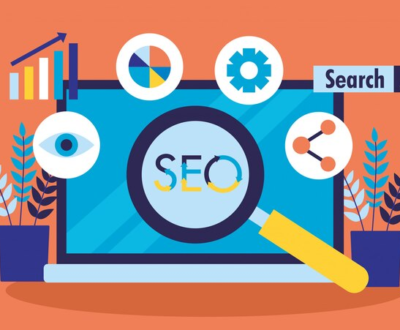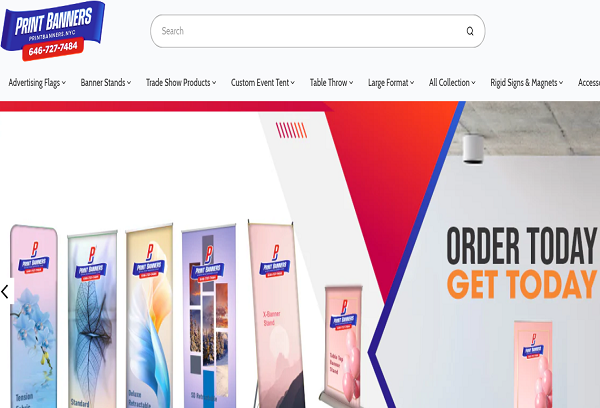7 E-Commerce SEO Tips for 2025
- February 7, 2025
- SEO Trends

The concept of ecommerce is straightforward—selling products and services online through a virtual storefront. However, mastering ecommerce SEO to ensure your store is visible to ready buyers (and enticing to undecided visitors) is where the challenge lies.
This article delves into essential ecommerce SEO strategies, focusing on the latest trends for 2025. With these tips, you can enhance your store’s visibility, attract high-quality traffic, and ultimately drive conversions.
Why Is E-Commerce SEO Crucial?
In an era where businesses invest heavily in paid advertising, social media management, and community building, you might wonder: is SEO still worth it? The answer is a resounding yes.
Here’s why:
- Traffic Source: 43% of all ecommerce traffic comes from Google, with 23.6% of ecommerce orders traced back to search engines. Ignoring SEO means losing potential customers to competitors.
- Trust and Visibility: Submitting your site to search engines, optimizing content, and enhancing the user journey build trust and improve visibility. A well-optimized site reduces confusion and fosters confidence in buyers.
No matter your ecommerce platform, an effective SEO strategy is pivotal for driving organic traffic and building sustainable growth.
Top E-commerce SEO Trends for 2025
The ecommerce landscape is evolving rapidly, influenced by technological advancements and changing consumer behavior. To stay ahead, consider implementing these key trends:
1. Leverage Artificial Intelligence (AI) for SEO
With over 75% of marketers using AI tools, these technologies are reshaping the SEO landscape. AI can help create personalized content, automate tasks, and refine strategies to match user intent.
For example, tools like Google’s Gemini and Bing AI generate summaries for search queries directly within search results. To benefit, focus on crafting authoritative content that AI bots can use as a credible source, encouraging users to click through for more details.
2. Optimize for Voice Search
Voice search adoption is rising, with an estimated 157 million users in the U.S. expected by 2026. Platforms like Siri, Alexa, and Google Assistant require optimization tailored to conversational queries.
- Use long-tail and question-based keywords.
- Answer common customer queries using natural language.
- Ensure your site is mobile-friendly and fast for improved voice search rankings.
3. Embrace Visual Search
Visual search tools like Google Lens and Bing Visual Search allow users to search using images. This trend is crucial for ecommerce businesses in industries like fashion, furniture, and automotive.
To capitalize on visual search:
- Use high-quality, appealing images.
- Optimize alt text, file names, and image metadata for better discoverability.
4. Use AI Copywriting Tools for Content Creation
AI tools such as ChatGPT streamline content creation, enabling businesses to produce high-quality blogs, product descriptions, and ad copy efficiently.
According to marketing experts, the true potential of AI lies in hyper-personalization—dynamically tailoring content based on user behavior and buyer personas. This approach enhances engagement and builds stronger customer connections.
5. Aim for Featured Snippets
Featured snippets—those highlighted answers at the top of search results—are highly coveted for ecommerce businesses. They drive visibility and establish authority.
Optimize your content to secure these spots by:
- Using structured data.
- Formatting content into lists, tables, or concise paragraphs.
- Regularly updating keyword research.
6. Invest in Video SEO
YouTube, the second-largest search engine, offers massive visibility opportunities. By optimizing your videos for both YouTube and Google, you can rank higher and engage your audience effectively.
Tips for video optimization:
- Add chapters or sections to improve navigation.
- Use detailed descriptions, optimized tags, and keywords.
- Include closed captions for accessibility.
7. Prioritize User Experience (UX)
In March 2024, Google replaced First Input Delay (FID) with Interaction to Next Paint (INP) in its Core Web Vitals. This metric measures how quickly a page responds to user interactions. A good INP score is under 200 milliseconds.
To improve UX:
- Conduct regular site audits.
- Optimize page elements to minimize lag.
- Ensure seamless navigation to enhance the buyer’s journey.
E-commerce SEO is no longer optional—it’s essential for businesses that want to thrive in a competitive digital marketplace. By leveraging AI, optimizing for new search technologies, and focusing on user experience, you can stay ahead of the curve in 2025 and beyond.
If you’re running an ecommerce store and need help navigating these trends, Earn SEO, a local SEO company based in New York, specializes in helping businesses optimize their online presence. With a customized SEO strategy, we can help increase your visibility and drive targeted traffic to your online storefront. Visit our website to learn more about our services and how we can help your business grow.
Earn SEO was established in 2011 by Devendra Mishra, a highly educated professional with varied training and experience. Mr. Mishra is responsible for business development, attracting new Earn SEO partners, and interacting with clients, the media and press, and acting as Brand Ambassador.

Devendra Mishra
Founder




































